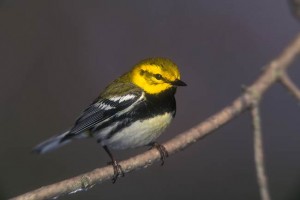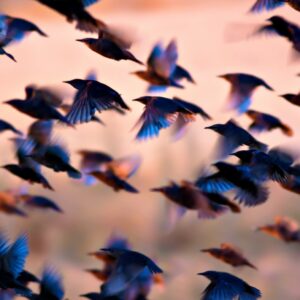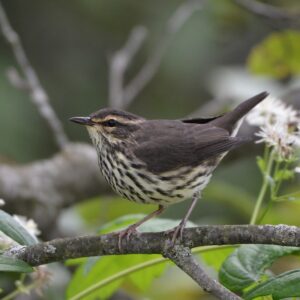7 Tips to Help Migrating Birds

Samantha Nurse, Web and Social Media Coordinator
Helene Van Doninck, wildlife veterinarian at the Cobequid Wildlife Rehabilitation Centre, shares her tips on how you can help migrating birds reach their destination this fall. This blog was edited by Sam Nurse, Nature Canada’s Website and Social Media Coordinator.
Once again autumn has arrived in Canada and for billions of birds this signals the ancient event of migration. No matter where you reside, you will see the populations of birds in your local area fluctuate as some birds leave for more southern climates, and some birds arrive from northern latitudes. There are of course many year-round residents that will hold tight to their territories, but they will soon be hosting some new visitors.
Migration itself is a fascinating biannual movement that has ignited countless theories and driven many people, scientists and non-scientists alike, to wonder about the exact mechanisms and routes taken by individual species. The intricacies of migration will be fodder for a future blog post, so stay tuned! For now, we’ll concentrate on tips that may help migrating birds get to their destination, or at least provide them with some fuel and energy for the voyage.
1. Leave Out Your Hummingbird Feeders
Contrary to popular belief, leaving your hummingbird feeders out will not cause delayed migration in hummingbirds. Migration is a powerful instinct and leaving the feeders out until all birds have left may well provide some extra nutrition for young birds that may need an extra boost, or for some that are merely passing through. As always, clean and change all feeders regularly to prevent the spread of disease.

A Hummingbird at the feeder by Shauna Stevens
2. Re-Stock Your Regular Bird Feeders
As with the hummingbird feeders, the availability of extra food in regular bird feeders may help passing migrants fuel up on the way to their destination. Every little bit helps!
3. Do Not Disturb Shorebird Fueling Stations
Each autumn billions of shorebirds gather in huge flocks to eat as much as they can over a short period of time. At the CWRC we live near one of these very important areas: the Bay of Fundy. Getting enough food during these stopovers is absolutely critical to allow these birds to fly for long distances to reach their southern destinations. Please respect these areas and keep disturbance to a minimum.
4. Look for Hurricane and Weather Refugees
Extreme weather can interrupt migration, send birds on errant paths, and damage food supplies and habitat. Watch for unusual birds in your area after weather events and if it seems that a bird is in the wrong place, let wildlife officials know or contact a rehabilitation centre. Often birds in the wrong place can re-direct themselves, but sometimes they need a helping hand.
5. Turn off the Lights
Millions of migrating birds are killed every year by something we never even think about: office towers that leave lights on overnight. This is particularly an issue when downtown cores are in the middle of migration corridors. One of the most problematic areas in Canada is downtown Toronto. Become educated about this problem in your local area and if it’s an issue, try to convince building managers to shut lights off at night. Other migration hazards include power lines, windows, wind turbines and other sources of light at night (including industrial flares). Become educated on these issues and let your government officials know you want policies that reflect your concerns. To learn more about the dangers birds face, check out our Save Bird Lives initiative.

Black-throated Green Warbler
6. Provide Natural Food Supplies
Items like apples, rosehips, berries, snags and fruit trees provide important nutrition for birds. Plant native species that provide food sources for migrating birds and don’t be too quick to pick up things like fallen apples.
7. Cut Out Pesticides
It is encouraging to see more and more municipalities banning the use of pesticides. Insect eating birds are on the decline throughout North America with habitat loss, climate change and loss of food supplies being among the cited reasons for the declines. Please avoid the use of pesticides. Insect eating birds rely on an abundance of different species of insects, and do a great job of keeping their numbers under control in an environmentally friendly way.
Most importantly this migration season, enjoy being a spectator for what is arguably the most remarkable natural phenomenon. Consider recording first and last seen dates for different species and make it an annual tradition. Spend time outside and enjoy the spectacle in your own backyard, you never know what you might see!



